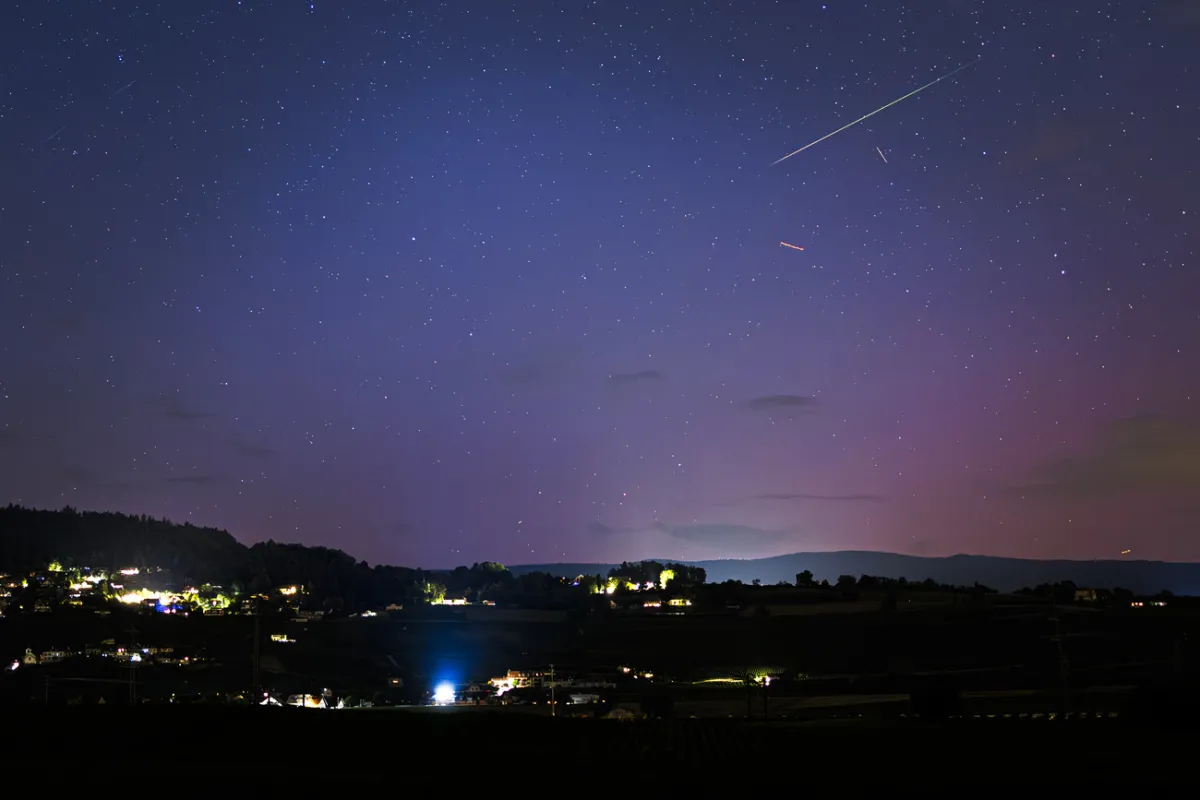Swiss Amateur Astronomer Makes 'Sensational Discovery'
+Get the most important news from Switzerland in your inbox
“It suddenly became clear to me that I had discovered something truly special,” says amateur astronomer Josef Käser.“I was simply delighted.” He hadn't expected to discover a moon near an asteroid on that summer evening.
But that's how it was, at 1:00 am on July 13. Josef Käser's goal at the Schafmatt Observatory was to determine the size and shape of an asteroid – known in technical terms as (108968) 2001 PE40. This is determined by the exact time the asteroid can occult a star. As expected, the asteroid succeeded in doing so for 1.1 seconds.
But then the completely unexpected happened: About 1.5 seconds after the star's reappearance, the starlight disappeared a second time, for a fraction of a second.
Fellow astronomers in Eberfing, Germany, recorded the same observation and confirmed that it is only one possible conclusion: the occulting asteroid is orbited by a previously unknown moon.
The brief occultation of the star by the moon – the term used when the star is briefly no longer visible –was not only visible to the naked eye; Josef Käser recorded the occultation in detail and later analysed it.
Based on the data, it was determined that the elongated asteroid measures 12.6 x 6.8 km. Its newly discovered moon, in contrast, measures only 2.9 x 1.83 km and orbits the asteroid at a distance of 23.9 kilometers.
Career highlightJosef Käser has been an amateur astronomer for 50 years and has recorded stellar occultations on numerous occasions. But the discovery of a new, unknown moon is the highlight of his astronomical career.“If you imagine that such an asteroid has been hurtling through space for 400 million years, and that it might only obscure the light of another star for a little more than a second when viewed from Schafmatt, then I find it fascinating how much precision is required to discover an asteroid moon.”
+ In Space exploration, Switzerland punches above its weightExternal link
The website of Orion, the Swiss journal for astronomy enthusiasts, calls it a“sensational discovery.” Marc Eichenberger, President of the Swiss Astronomical Society (SAG), doesn't want to go quite that far. In football terms, he says this discovery is comparable to winning the Swiss championship, but not to winning the Champions League.
“This discovery is a very nice achievement for Switzerland, but it's not as if such a discovery only happens once in 100 years,” he said. A few asteroid moons have been spotted around the world in recent years. Each of these discoveries is a piece of the puzzle in small planet research.
Translated from German by DeepL/jdp

Legal Disclaimer:
MENAFN provides the
information “as is” without warranty of any kind. We do not accept
any responsibility or liability for the accuracy, content, images,
videos, licenses, completeness, legality, or reliability of the information
contained in this article. If you have any complaints or copyright
issues related to this article, kindly contact the provider above.
Most popular stories
Market Research

- United States Lubricants Market Growth Opportunities & Share Dynamics 20252033
- UK Digital Health Market To Reach USD 37.6 Billion By 2033
- Immigration Consultancy Business Plan 2025: What You Need To Get Started
- United States Animal Health Market Size, Industry Trends, Share, Growth And Report 2025-2033
- Latin America Mobile Payment Market To Hit USD 1,688.0 Billion By 2033
- United States Jewelry Market Forecast On Growth & Demand Drivers 20252033






















Comments
No comment